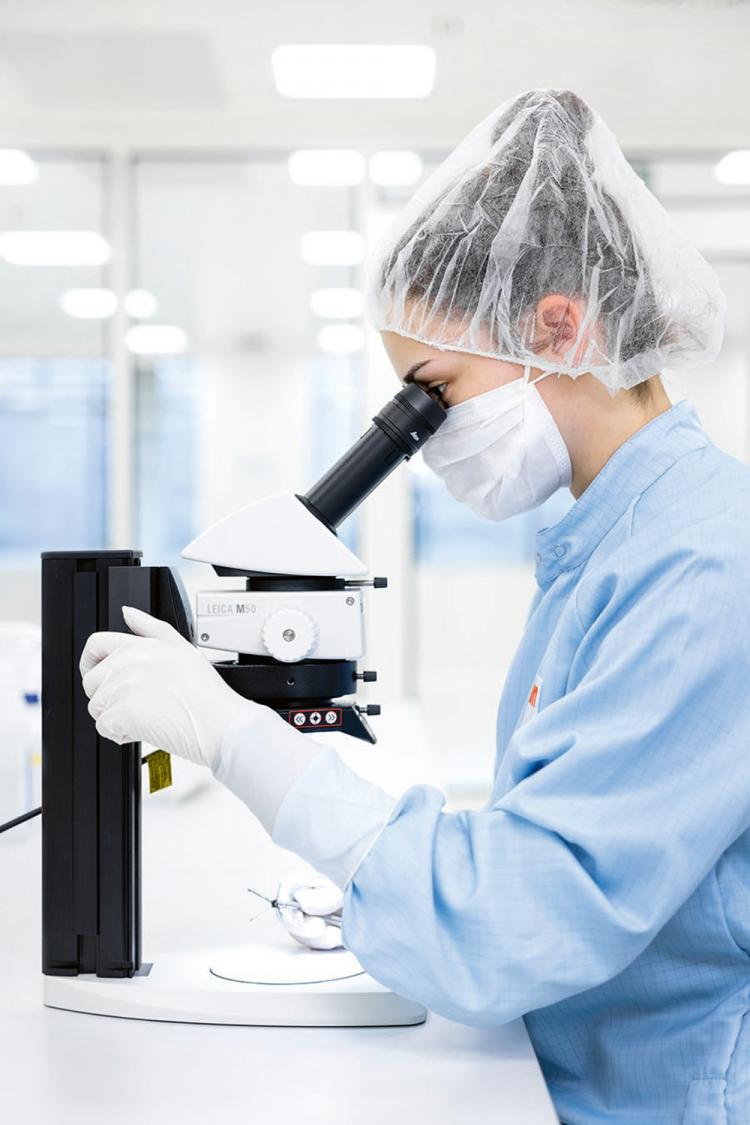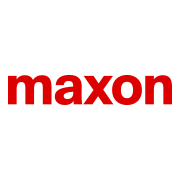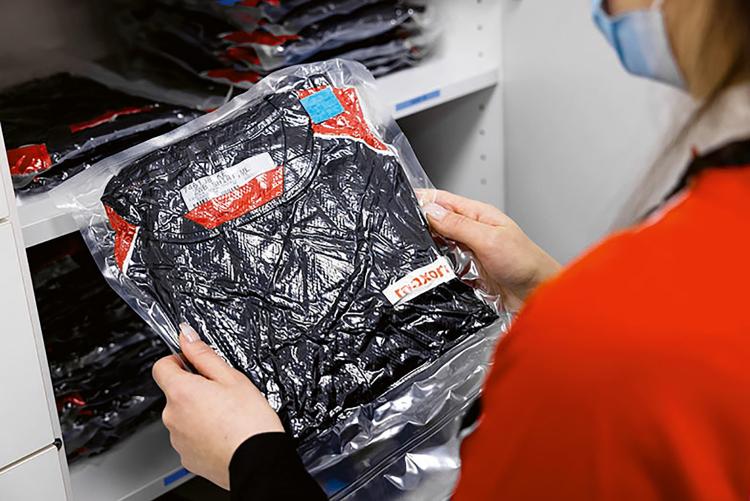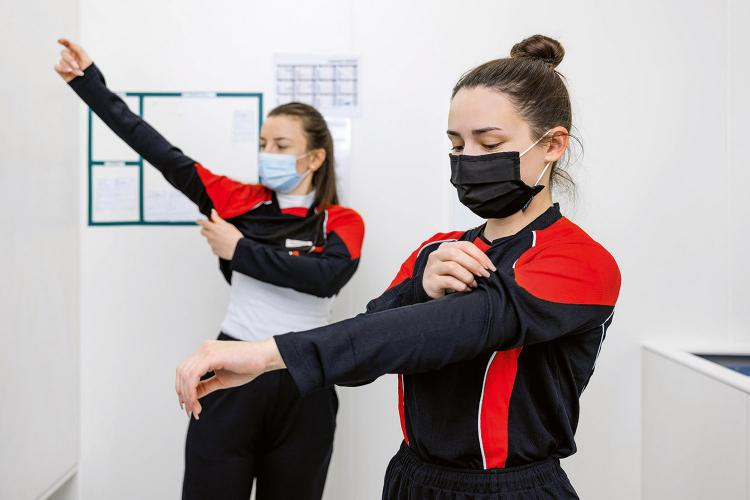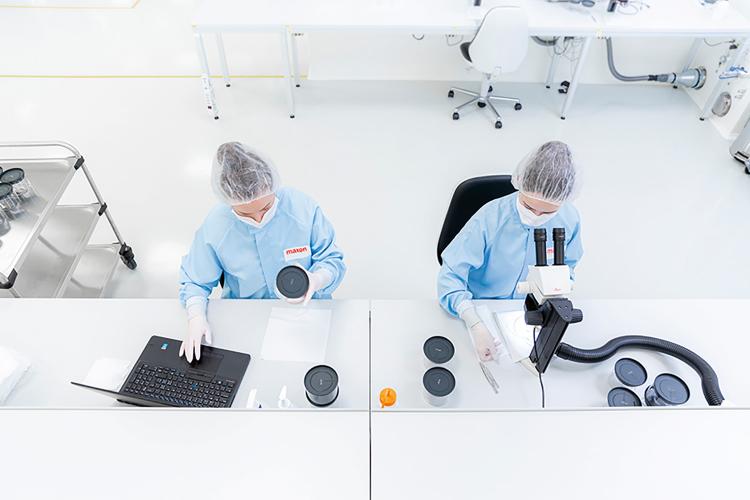Behind the glass pane, in the white, light-flooded room, is a world very different from the rest of the production areas of the maxon Group. Here, at the drive specialist’s headquarters, nestled between lakes and mountains, a production area for drives to be used in medical applications recently commenced operation. The particle concentration in the air is low and constantly monitored. This clean environment is usually perfectly adequate because motors for insulin pumps, medical dosing units, etc. do not have to be completely free of germs and bacteria.
However, applications in the field of high-tech medicine are another story altogether, especially when it comes to implantable drive systems. For these applications, assembly is being moved to the new GMP area (good manufacturing practice). In this cleanroom class, not only the particle concentration, but also the microbiological contamination of surfaces and the air is measured and examined for traces of spores, bacteria, or fungi. This clinical environment places high demands on the ventilation technology, the instruments, and especially the people that spend time inside it.
Cleanliness starts and ends with discipline
People who work in this environment always have to observe the same strict processes and rules. The two production staff members, Albane Lloqanaj and Ruth Da Silva, put on special pants and tops that arrived vacuum-packed from a cleanroom laundry. The high-tech materials that this clothing is made from make it anti-bacterial. The two staff members then put on special hygiene masks, hair nets, gloves, labcoats, and antistatic shoes.
Additionally, they have to disinfect their hands for at least 30 seconds using skin-friendly disinfectant in a six-step hygienic hand disinfection procedure. Subsequently, the gloves are disinfected with pure alcohol that evaporates without leaving any residue. This ensures that neither particles nor germs can stick to the gloves. All these process steps occur in a defined order. Additionally, care has to be taken that no contaminated air enters the GMP room from the outside. To this end, three zones that are separated by automated airlocks have to be crossed. It is only possible to open one door at a time, because the further you go in, the higher the air pressure in the respective room becomes.
In the cleanroom
Inside the cleanroom itself, the staff also have to be highly disciplined. For example, they are not allowed to touch their faces. And if they do, it must always be consciously, so that they can immediately disinfect their gloves again. “I like this kind of work very much, because it’s challenging, varied, and responsible. No mistakes are allowed when our drives are being used for implantable systems”, says production staff member Albane Lloqanaj. This also requires an open approach to errors. Team leader Stefan Kathriner: “It’s important that we immediately alert each other if something looks strange or we suspect an error. Criticism is never personal, always objective.”
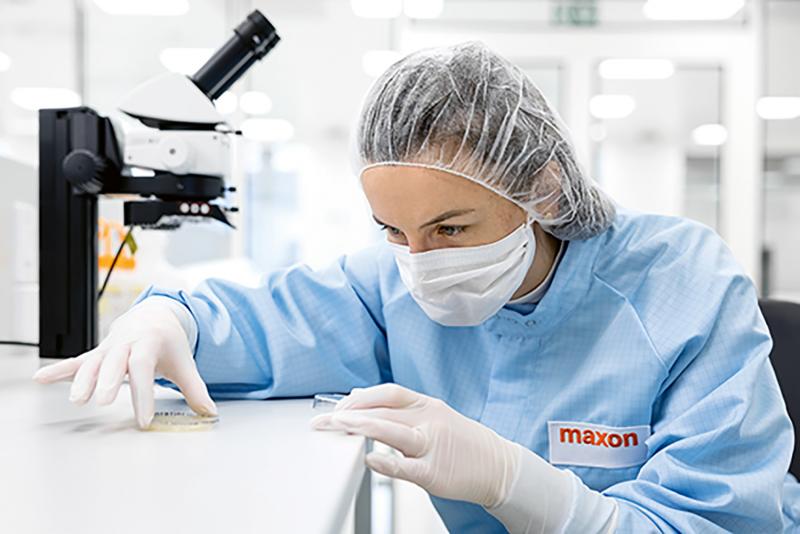
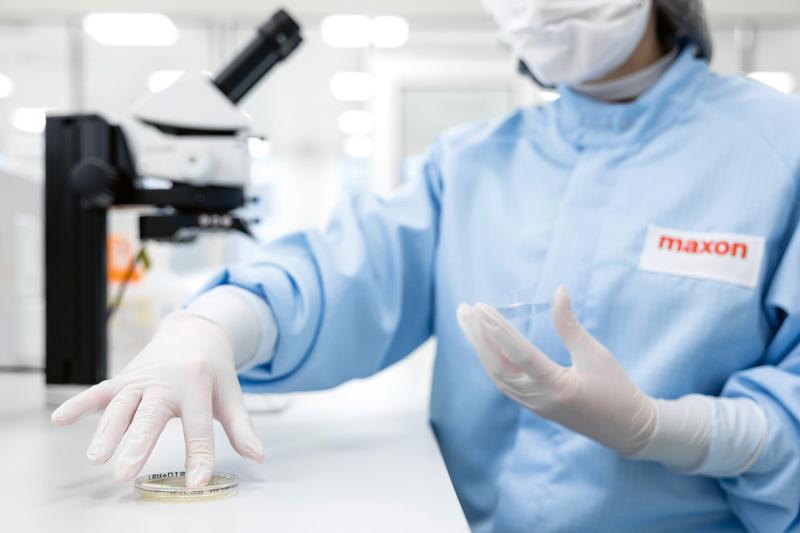
To ensure that the amount of germs or bacteria on the work surfaces or in the air does not exceed a certain threshold, maxon regularly conducts tests with a nutrient-rich gelatin. These so-called agar plates are pressed onto surfaces or left open around the room. The gelatin serves as breeding ground for micro organisms. After 72 hours in the incubator, it is possible to see with the naked eye whether there is contamination and how high it is.
The effort involved in operating such a GMP environment is immense, which is why only a few special customer orders for implantable systems are processed there. In the past few years, the cleanroom specialists at maxon have learned a lot from these projects. Stefan Kathriner says, “We have comprehensive know-how and hope that we will be able to handle more customer orders of this kind in future.”
Find more information on drive systems for medical technology: medical.maxongroup.com
